Uncategorised
+ more newsSurface Ocean Biogeochemistry Observations
Thursday, 28 February 2019
|
The surface water measurement component of IOCCP facilitates coordination of current observational efforts and interactions with other observing efforts, advocates for common best practices, and facilitates incorporation of new technology with an overall aim to establish a global sustained surface ocean CO2 network. Read more...
|
Responsible SSG Member
Surface Ocean CO2 Reference Observing Network:
INORGANIC CARBON EOV |
PREFACE
Determination of surface water partial pressure/fugacity of carbon dioxide (pCO2/fCO2) is of great interest as it provides a means to determine flux of CO2 between the ocean and atmospheric and offers the opportunity to measure changes in surface water CO2 levels in support of ocean acidification research. Surface water CO2 levels are steadily increasing due to increasing atmospheric CO2 levels from anthropogenic sources, primarily burning of fossil fuels, and resulting increases in air-sea CO2 fluxes. However, the ocean CO2 sinks and surface water CO2 increases are not homogeneous in time of space. On a climatological scale the lower latitude oceans emit CO2 (CO2 sources) and higher latitude oceans sequester CO2 (CO2 sinks). Patterns change by season and are modulated by biological and physical processes. Multi-year anomalies are becoming apparent in the observational databases often linked to large-scale climate reorganizations such as the ENSO.
The surface water CO2 effort aims to quantify CO2 uptake and surface water CO2 changes on seasonal scales for the world's ocean to determine the sequestration of anthropogenic CO2, and elucidate the mechanisms of changing uptakes. This is in support of assessments of the fate of CO2 in the earth system and to determine impacts of rising and changing surface CO2 levels on ocean ecosystems. The observations are done from a variety of platforms with automated instrumentation. Currently most measurements are done on ships of opportunity (SOOP-CO2) and surface moorings utilizing similar systems that measure the CO2 content in the headspace of a chamber (equilibrator) that had seawater flowing through it such that headspace and water have the same CO2 concentrations. The infrared detectors used are calibrated at frequent intervals with traceable atmospheric standard gases providing a key link between surface water and atmospheric CO2 levels.
New instrumentation and new platforms are coming on line that will enhance the surface water CO2 observing network. These include smaller instruments with different calibration and equilibration procudures, and different detectors such as spectrophotometers. Autonomous surface vehicles utilizing wave, solar and wind power are being tested and deployed. Using pH measurements [on profiling floats] to calculate pCO2 is being investigated. In order to include these measurements into the surface water CO2 data holdings, careful tests and intercomparisons must be accomplished.
Instruments and sensors: projects and programs
Monday, 03 December 2018
Below is a list of a number of projects, programs and initiatives related to marine biogeochemistry instruments and sensors, their development and application for the benefit of further instrumenting our oceans. These projects are either global or regional in nature. Please contact the IOCCP Office with suggestions to complement or update this list.
|
|
|
| Title: |
SenseOCEAN
|
| Website: |
|
| Brief Description: |
SenseOCEAN draws together world leading marine sensor developers to create a highly integrated multifunction and cost-effective in situ marine biogeochemical sensor system. The marine environment plays an essential role in the earth's climate as well as providing resources, recreational opportunities and acting as a vital transportation route. However the inherent vastness of the oceans means that our ability to monitor the health of this important system remains limited.
This project provides a quantum leap in the ability to measure crucial biogeochemical parameters. Innovations will be combined with state of the art sensor technology to produce a modular sensor system that can be deployed on many platforms. Prototypes will be optimised for scale-up and commercialisation.
These are tested and demonstrated on profiling floats, deep-sea observatories, autonomous underwater vehicles, and fishing vessels. Ultimately the developed sensors will be launched as commercially available products.
|
| Key documents: |
|
|
Contacts:
|
Doug Connelly (This email address is being protected from spambots. You need JavaScript enabled to view it.)
|
|
|
|
| Title: |
Next Generation Web-Enabled Sensors for the Monitoring of a Changing Ocean (NeXOS)
|
| Website: |
|
| Brief Description: |
The general objective of NeXOS is to develop new cost-effective, innovative and compact integrated multifunctional sensor systems (ocean optics, ocean passive acoustics, and sensors for an Ecosystem Approach to Fisheries (EAF)), which can be deployed from mobile and fixed ocean observing platforms, as well as to develop downstream services for the Global Ocean Observing System (GOOS), Good Environmental Status (GES) of European marine waters (Marine Framework Strategy Directive) and the European Common Fisheries Policy (CFP).
NeXOS is a collaborative project funded by the European Commission 7th Framework Programme, under the call OCEAN-2013.2 - The Ocean of Tomorrow 2013 - Innovative multifunctional sensors for in-situ monitoring of marine environment and related maritime activities. It is composed of 21 partners including public entities, small and , companies and scientific organizations from 6 European countries.
|
| Key documents: |
|
|
Contacts:
|
Eric Delory (This email address is being protected from spambots. You need JavaScript enabled to view it.)
|
|
|
|
| Title: |
integrated in Situ CHemical MApping probes (SCHeMA)
|
| Website: | |
| Brief Description: |
SCHeMA aimed at providing an open and modular sensing solution for in situ high resolution mapping of a range of anthropogenic and natural chemical compounds that may have feedback (synergic) interaction: toxic and/or essential Hg, Cd, Pb, As and Cu trace metal species; nitrate, nitrite, and phosphate nutrients; species relevant to the carbon cycle; volatile organic compounds; potentially toxic algae species and toxins.
The SCHeMA system consists of a plug-and-play adaptive wired/wireless chemical sensor probe network serving as a front-end for gathering detailed spatial and temporal information on water quality and status based on a range of hazardous compounds.
|
| Key documents: |
|
|
Contacts:
|
Mary-Lou Tercier-Waeber (This email address is being protected from spambots. You need JavaScript enabled to view it.)
|
|
|
|
| Title: |
Common Sense: Marine Sensors - Marine Monitoring
|
| Website: | |
| Brief Description: |
COMMON SENSE is a project that supports the implementation of European Union marine policies such as the Marine Strategy Framework Directive (MSFD) and the Common Fisheries Policy (CFP). The project, which was launched in November 2013, is funded by the EC Seventh Framework Programme (FP7) and has been designed to directly respond to requests for integrated and effective data acquisition systems by developing innovative sensors that will contribute to our understanding of how the marine environment functions.
|
| Key documents: |
|
|
Contacts:
|
This email address is being protected from spambots. You need JavaScript enabled to view it.
|
Instruments and sensors: references
Monday, 03 December 2018
Following is a list of references related to marine biogeochemistry instruments and sensors, and their application. Please contact the IOCCP Office if you have any comments, questions or suggestions for additional resources useful to the community.
|
|
|
|
|
Dickson, A.G., Afghan, J.D. and Anderson, G.C., 2003. Reference materials for oceanic CO2 analysis: a method for the certification of total alkalinity. Marine Chemistry, 80(2), pp.185-197.
|
|
Spaulding, R. S., DeGrandpre, M. D., Beck, J. C., Hart, R. D., Peterson, B., De Carlo, E. H., et al. (2014). Autonomous in situmeasurements of seawater alkalinity. Environ. Sci. Technol. 48, 9573–9581. doi: 10.1021/es501615x
Seelmann, K., S. Aßmann, A. Körtzinger, 2019. Characterization of a novel autonomous analyzer for seawater total alkalinity: Results from laboratory and field tests. Limnol Oceanogr Methods, 17: 515-532. doi:10.1002/lom3.10329
Seelmann, K., M. Gledhill, S. Aßmann, A. Körtzinger, 2020. Impact of impurities in bromocresol green indicator dye on spectrophotometric total alkalinity measurements. Ocean Sci. doi: 10.5194/os-16-535-2020.
|
|
Sutton, A. J., Sabine, C. L., Maenner-Jones, S., Lawrence-Slavas, N., Meinig, C., Feely, R. A., Mathis, J. T., Musielewicz, S., Bott, R., McLain, P. D., Fought, H. J., and Kozyr, A.: A high-frequency atmospheric and seawater pCO2 data set from 14 open-ocean sites using a moored autonomous system, Earth Syst. Sci. Data, 6, 353-366, https://doi.org/10.5194/essd-6-353-2014, 2014.
|
|
Jiang, Z.-P., Hydes, D. J., Tyrrell, T., Hartman, S. E., Hartman, M. C., Campbell, J. M., Johnson, B. D., Schofield, B., Turk, D., Wallace, D., Burt, W., Thomas, H., Cosca, C., and Feely, R.: Application and assessment of a membrane-based pCO2 sensor under field and laboratory conditions. Limnology and Oceanography Methods, 12, 264-280, 2014.
|
|
DeGrandpre, M.D., Baehr, M.M. and T.R. Hammar. (1999). Calibration-free optical chemical sensors. Anal. Chem., 71, 1152-1159. DeGrandpre, M.D., Hammar, T.R., Smith, S.P., and F.L. Sayles. (1995). In situ measurements of seawater pCO2. Limnol. Oceanog., 40, 969-975.
|
|
DeGrandpre, M. D. (1993). Measurement of seawater pCO2 using a renewable-reagent fiber optic sensor with colorimetric detection. Anal. Chem. 65, 331–337. doi: 10.1021/ac00052a005
|
|
DeGrandpre, M. D., Baehr, M. M., and Hammar, T. R. (2000). “Development of an optical chemical sensor for oceanographic applications: the submersible autonomous moored instrument for seawater CO2,” in Chemical Sensors in Oceanography, ed M. S. Varney (Amsterdam: Gordon and Breach publisher), 123–141.
|
|
Atamanchuk, D., Tengberg, A., Thomas, P. J., Hovdenes, J., Apostolidis, A., Huber, C., et al. (2014). Performance of a lifetime-based optode for measuring partial pressure of carbon dioxide in natural waters. Limnol. Oceanogr. Methods 12, 63–73. doi: 10.4319/lom.2014.12.63
|
|
Fietzek, P., B. Fiedler, T. Steinhoff, and A. Körtzinger (2014). In situ accuracy assessment of a novel underwater pCO2 sensor based on membrane equilibration and NDIR spectrometry. J. Atm. Ocean. Techn. 31, 181-196.
|
|
Fiedler, B., P. Fietzek, N. Vieira, P. Silva, H.C. Bittig, and A. Körtzinger (2013). In situ CO2 and O2 measurements on a profiling float. J. Atm. Ocean. Techn. 30, 112-126, DOI: 10.1175/JTECH-D-12-00043.1.
|
|
Chierici, M.; Fransson, A. and Nojiri, Y., (2006), Biogeochemical processes as drivers of surface fCO2 in contrasting provinces in the subarctic North Pacific Ocean, Global Biogeochem. Cycles 20 GB1009 doi:10.1029/2004GB002356. Murphy, P.P.; Nojiri, Y.; Fujinuma, Y.; Wong, C.S.; Zeng, J.; Kimoto, T. and Kimoto, H., (2001), Measurements of Surface Seawater fCO2 from Volunteer Commercial Ships: Techniques and Experiences from Skaugran, J. Atmos. Ocn. Tech. 18 1719-1734. Nakaoka, S., Nojiri, Y. Miyazaki, C. Tsumori, H. and Mukai, H., (2009) Variations of oceanic pCO2 and air-sea CO2 flux in the North Pacific Ocean since 1995, Proceeding of 8th International Carbon Dioxide Conference, T2-059, Jena, Germany.
|
|
Characterization of a Time-Domain Dual Lifetime Referencing pCO2 Optode and Deployment as a High-Resolution Underway Sensor across the High Latitude North Atlantic Ocean. Front. Mar. Sci. 4:396. doi: 10.3389/fmars.2017.00396
|
|
Clarke, J.S. et al. (2017) Developments in marine pCO2 measurement technology; towards sustained in situ observations. TRAC-Trends in analytical chemistry. 88. 351-354. doi: 10.1016/j.trac.2016.12.008
|
|
Bresnahan, P.J., Martz T.R., Takeshita Y., Johnson K.S., LaShomb M.. 2014. pdfBest practices for autonomous measurement of seawater pH with the Honeywell Durafet, Methods in Oceanography 9, 44-60, doi:10.1016/j.mio.2014.08.003
|
|
Martz, T. R., Carr, J. J., French, C. R., and DeGrandpre, M. D. (2003). A submersible autonomous sensor for spectrophotometric pH measurements of natural waters. Anal. Chem. 75, 1844–1850. doi: 10.1021/ac020568l
|
|
Bellerby, R. G. J., Olsen, A., Johannessen, T., and Croot, P. (2002). A high precision spectrophotometric method for on-line shipboard seawater pH measurements: the automated marine pH sensor (AMpS). Talanta 56, 61–69. doi: 10.1016/S0039-9140(01)00541-0
|
|
Martz, T. R., Connery, J. G., and Johnson, K. S. (2010). Testing the Honeywell Durafet® for seawater pH applications. Limnol. Oceanogr. Methods 8, 172–184. doi: 10.4319/lom.2010.8.172
|
|
Rérolle V., Ruiz-Pino D., Rafizadeh M., Loucaides S., Papadimitriou S., Mowlem M. & Chen J., (2016). Measuring pH in the Arctic Ocean: colorimetric method or SeaFET? Methods in Oceanography 17: 32–49.
|
|
Reggiani, E. R., King, A. L., Norli, M., Jaccard, P., Sørensen, K., & Bellerby, R. G. (2016). FerryBox-assisted monitoring of mixed layer pH in the Norwegian Coastal Current. Journal of Marine Systems.
|
|
Clarke, Jennifer S.; Achterberg, Eric P.; Rerolle, Victoire M. C.; et al. (2015) Characterisation and deployment of an immobilised pH sensor spot towards surface ocean pH measurements. Analytica chimica acta Volume: 897 Pages: 69-80
|
|
Okazaki, R. R., Sutton, A. J., Feely, R. A., Dickson, A. G., Alin, S. R., Sabine, C. L., et al. (2017). Evaluation of marine pH sensors under controlled and natural conditions for the Wendy Schmidt ocean health XPRIZE. Limnol. Oceanogr. Methods 15, 586–600. doi: 10.1002/lom3.10189
|
|
Lai C-Z, DeGrandpre MD and Darlington RC (2018) Autonomous Optofluidic Chemical Analyzers for Marine Applications: Insights from the Submersible Autonomous Moored Instruments (SAMI) for pH and pCO2. Front. Mar. Sci. 4:438. doi: 10.3389/fmars.2017.00438
|
|
Boss, E., Guidi, L., Richardson, M. J., Stemmann, L., Gardner, W., Bishop, J. K., ... & Sherrell, R. M. (2015). Optical techniques for remote and in-situ characterization of particles pertinent to GEOTRACES. Progress in Oceanography, 133, 43-54.
|
|
Bishop, J. K. B. (2009) Autonomous Observations of the Ocean Biological Carbon Pump. Oceanography , 22 (2), 182-193.
|
|
See our page HERE. |
|
Thouron, D., Vuillemin, R., Philippon, X., Lourenço, A., Provost, C., Cruzado, A., et al. (2003). An autonomous nutrient analyzer for oceanic long-term in situ biogeochemical monitoring. Anal. Chem. 75, 2601–2609. doi: 10.1021/ac020696+
|
|
Sakamoto, C. M., Johnson, K. S., & Coletti, L. J. (2009): Improved algorithm for the computation of nitrate concentrations in seawater using an in situ ultraviolet spectrophotometer. Limnology and Oceanography: Methods, 7(1), 132-143.
|
|
Riser, S.C., Johnson, K.,Lewis, M.R., Altshuler, T. (2011): Autonomous Measurements of Oceanic Dissolved Nitrate from Commercially Available Profiling Floats Equipped with ISUS APPROVED FOR PUBLIC RELEASE doi:ADA555146
|
|
Legiret, F. E., Sieben, V. J., Woodward, E. M., Abi Kaed Bey, S. K., Mowlem, M. C., Connelly, D. P., et al. (2013). A high performance microfluidic analyser for phosphate measurements in marine waters using the vanadomolybdate method. Talanta 116, 382–387. doi: 10.1016/j.talanta.2013.05.004
|
|
Grand, M.M. et al. (2017) A Lab-On-Chip Analyzer for Long-Term in Situ Monitoring at Fixed Observatories: Optimization and Performance Evaluation in Estuarine and Oligotrophic Coastal Waters. Front. Mar. Sci., doi.org/10.3389/fmars.2017.00255]
|
|
Clinton-Bailey, Geraldine S. et al. (2017) A Lab-on-Chip analyzer for in situ measurement of soluble reactive phosphate: improved phosphate blue assay and application to fluvial monitoring. Environmental Science & Technology, 51 (17). 9989-9995.10.1021/acs.est.7b01581
|
|
Barus C, Chen Legrand D, Striebig N, Jugeau B, David A, Valladares M, Munoz Parra P, Ramos ME, Dewitte B and Garçon V (2018) First Deployment and Validation of in Situ Silicate Electrochemical Sensor in Seawater. Front. Mar. Sci. 5:60. doi: 10.3389/fmars.2018.00060
|
|
Tedetti, M., Joffre, P., and Goutx, M. (2013). Development of a field-portable fluorometer based on deep ultraviolet LEDs for the detection of phenanthrene- and tryptophan-like compounds in natural waters. Sens. Actuat. B Chem. 182, 416–423. doi:10.1016/j.snb.2013.03.052
|
|
Cyr F, Tedetti M, Besson F, Beguery L, Doglioli AM, Petrenko AA and Goutx M (2017) A New Glider-Compatible Optical Sensor for Dissolved Organic Matter Measurements: Test Case from the NW Mediterranean Sea. Front. Mar. Sci. 4:89. doi: 10.3389/fmars.2017.00089
|
Instruments and sensors: resources
Monday, 03 December 2018
Following is a list of various resources related to marine biogeochemistry instruments and sensors, and their application. Please contact the IOCCP Office if you have any comments, questions or suggestions for additional resources useful to the community.
|
|
|
|
|
|
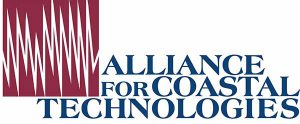 You can find all the evaluation reports at: http://www.act-us.info/evaluations.php
You can find all the evaluation reports at: http://www.act-us.info/evaluations.php
|
|
|
|
|
|
|
|
|
EU Horizon2020 AtlantOS Sensors and Instrumentation Roadmap
|
|
[...]
|
|
[...]
|
Oxygen: references
Monday, 07 May 2018
Following is a list of references to standard operating procedures, best practices, manuals and user guides (in alphabetical order) which include information on how to handle dissolved oxygen measurements in marine waters. Please contact the IOCCP Office if you have suggestions for documents that you think are missing from this site.
|
Palevsky, H.I., Clayton, S., et al (2023) OOI Biogeochemical Sensor Data: Best Practices & User Guide, Version 1.1.1. Ocean Observatories Initiative Biogeochemical Sensor Data Working Group, 134pp. DOI: https://doi.org/10.25607/OBP-1865.2
|
|
Bittig H, Körtzinger A, Neill C, van Ooijen E, Plant JN, Hahn J, Johnson KS, Yang B and Emerson SR, 2018. Oxygen Optode Sensors: Principle, Characterization, Calibration, and Application in the Ocean. Frontiers in Marine Science 4:429. http://doi.org/10.3389/fmars.2017.00429
|
|
Bittig H, Körtzinger A, Johnson K, Claustre H, Emerson S, Fennel K, Garcia H, Gilbert D, Gruber N, Kang D-J, Naqvi W, Prakash S, Riser S, Thierry V, Tilbrook B, Uchida H, Ulloa O, Xing X (2018). SCOR WG 142: Quality Control Procedures for Oxygen and Other Biogeochemical Sensors on Floats and Gliders. Recommendations on the conversion between oxygen quantities for Bio-Argo floats and other autonomous sensor platforms. http://doi.org/10.13155/45915 and at https://github.com/HCBScienceProducts/SCOR_WG142_O2_conversions
|
|
Bittig H, Körtzinger A, Johnson K, Claustre H, Emerson S, et al. 2015. SCOR WG 142: Quality control procedures for oxygen and other biogeochemical sensors on floats and gliders. Recommendation for oxygen measurements from Argo floats, implementation of in-air-measurement routine to assure highest long-term accuracy. http://doi.org/10.13155/45917
|
|
Bushinsky, S.M., and Emerson, S., 2015. Marine biological production from in situ oxygen measurements on a profiling float in the subarctic Pacific Ocean, Global Biogeochemical Cycles, https://doi.org/10.1002/2015GB005251
|
|
Bushinsky, S. M. and Emerson, S., 2013, A method for in-situ calibration of Aanderaa oxygen sensors on surface moorings, Marine Chemistry, https://doi.org/10.1016/j.marchem.2013.05.001
|
|
Bushinsky, S. M. , Emerson, S., Riser, S.C., and Swift D.D., 2016, Accurate oxygen measurements on modified Argo floats using in situ air calibrations, Limnology and Oceanography Methods, https://doi.org/10.1002/lom3.10107
|
|
|
|
Gruber N, Doney SC, Emerson SR, Gilbert D, Kobayashi T, et al. 2010. Adding oxygen to ARGO: developing a global in situ observatory for ocean deoxygenation and biogeochemistry. In Proceedings of OceanObs'09: Sustained Ocean Observations and Information for Society, Venice, Italy, 21–25 September 2009,Vol.2: Community White Papers, ed. J Hall, DE Harrison, D Stammer, chap. 39. ESA Publ. WPP-306. Paris: Eur.Space Agency, http://www.oceanobs09.net/proceedings/cwp/cwp39/
|
|
Johnson, K.S., Berelson, W.M., Boss E.S., Chase Z., Claustre H., Emerson, S.R., Gruber, N., Kortzinger A., Perry, M.J., and Riser S.C., 2009.
|
|
Johnson, K.S., Plant J.N., Riser S.C., and Gilbert D., 2015. Air oxygen calibration of oxygen optodes on a profiling float array, Journal of Atmospheric and Oceanic Technology, 32, 2160-2172. https://doi.org/10.1175/JTECH-D-15-0101.1
|
|
Langdon, C., 2010.
|
|
Larsen M., Lehner P., Borisov S.M., Klimant I., Fischer J.P., Stewart F.J., Canfield D.E., Glud R.N., 2016. In situ quantification of ultra-low O2 concentrations in oxygen minimum zones: Application of novel optodes, Limnology and Oceanography Methods, 14, 784-800. https://doi.org/10.1002/lom3.10126
|
|
Moßhammer, M., Strobl, M., Kühl, M., Klimant, I., Borisov, S. M., Klaus, K., 2016. Design and Application of an Optical Sensor for Simultaneous Imaging of pH and Dissolved O2 with Low Cross-Talk. ACS Sens., 1 (6), 681–687 https://doi.org/10.1021/acssensors.6b00071
|
|
Revsbech N., Larsen L.H., Gundersen J., Dalsgaard T., Ulloa O., Thamdrup B., 2009. Determination of ultra-low oxygen concentrations in oxygen minimum zones by the STOX sensor, Limnology and Oceanography Methods, 7, 371-381. https://doi.org/10.4319/lom.2009.7.371
|
|
Takeshita, Y., Martz, T.R., Johnson, K.S., Plant, J.N., Gilbert, D., Riser, S.C., Neill, C., and Tilbrook, B., 2013. A climatology‐based quality control procedure for profiling float oxygen data, Journal of Geophysical Research, https://doi.org/10.1002/jgrc.20399
|
|
Tengberg, A. et al., 2006. Evaluation of a lifetime-based optode to measure oxygen in aquatic systems, Limnology and Oceanography Methods, 4, 7-17. https://doi.org/10.4319/lom.2006.4.7
|
|
Thierry V., D. Gilbert, T. Kobayashi, K. Sato, C. Schmid, H. Bittig, 2016, Argo data management, Processing Argo OXYGEN data at the DAC level, https://doi.org/10.13155/39795
|
|
|
|
Lorenzoni, L., M. Telszewski, H. Benway, A. P. Palacz (Eds.), 2017. A user's guide for selected autonomous biogeochemical sensors. An outcome from the 1st IOCCP International Sensors Summer Course.IOCCP Report No. 2/2017, 83 pp. |
Oxygen: resources
Monday, 07 May 2018
Following is a list of various resources related to dissolved oxygen observations. These include links to webinars, presentations, special reports and outreach publications, as well as a list of selected review and high impact research papers. Please contact the IOCCP Office if you have any comments, questions or suggestions for additional resources useful to the community.
|
V. Garçon. Declining oxygen in the open and coastal ocean. IOC Anton Bruun Memorial Lecture. June 2017. https://en.unesco.org/IOC-29/memorial-lectures
|
|
M. Grégoire. GO2NE: Deoxygenation in the global and coastal ocean: challenges of observing and modelling low oxygen zones. GOOS Webinar Series. June 2018. https://www.youtube.com/watch?v=KAMxm8Ao-9o
Talks from the Swedish Academy of Sciences Symposium on The Expansion of Low Oxygen Zones in the Global Ocean and Coastal Waters (February 2019):
D. Breitburg with introduction by D. Conley & R. Almstrand. The Ocean is losing its breath - an overview of the problem, its effects, and solutions.
A. Oschlies. Patterns of deoxygenation in the global oceans. https://kva.screen9.tv/media/9_juQRO_EPC4pl76w96mkg/patterns-of-deoxygenation-in-the-global-oceans
B. Ward. Microbial communities and biogeochemical cycles in oxygen minimum zones |
|
NEW!!! Laffoley, D., Baxter, J.M. (2019). Ocean Deoxygenation: Everyone's Problem. IUCN Report, pp. 562. https://doi.org/10.2305/IUCN.CH.2019.13.en
|
|
Participants of the international conference “Ocean Deoxygenation: Drivers and Consequences – Past – Present – Future”, 2018. Kiel Declaration on Ocean Deoxygenation: The Ocean is Losing its Breath. https://portal.geomar.de/documents/18426/926141/Kiel_declaration_fin-2.pdf/16d503ff-34aa-4365-97ac-be05c7ecf297
|
|
Paulmier A., 2017. Oxygen and the ocean. In: The Ocean revealed. Paris: CNRS Edition, 2017. p. 64-65. http://horizon.documentation.ird.fr/exl-doc/pleins_textes/divers17-11/010071618.pdf
|
|
Garçon et al., 2019, Oxygen. In Volume 1 Marine Biogeochemistry, Encyclopedia of Ocean Sciences, 3rd Edition, Eds. in chiefs J. Kirk Cochran, Henry Bokuniewicz, Patricia Yager, Academic Press, pp 168-173, Book ISBN: 9780128130810, and eBook ISBN: 9780128130827
|
|
Breitburg, D., Grégoire, M. and Isensee, K. (eds.). Global Ocean Oxygen Network 2018. The ocean is losing its breath: Declining oxygen in the world's ocean and coastal waters. IOC-UNESCO, IOC Technical Series, No. 137 40pp. http://unesdoc.unesco.org/images/0026/002651/265196e.pdf
|
|
Isensee et al., 2015. The Ocean is Losing its Breath. In: Ocean and Climate, Scientific Notes. p.25-30. http://www.ocean-climate.org/wp-content/uploads/2015/06/150601_ScientificNotes.pdf#page=25
|
|
Bopp, L. et al., 2013, Bopp L, Resplandy L, Orr JC, Doney SC, Dunne JP, et al. 2013. Multiple stressors of ocean ecosystems in the 21st century: projections with CMIP5 models, Biogeosciences, 10, 6225-6245, https://doi.org/10.5194/bg-10-6225-2013
|
|
Breitburg DL, Hondorp DW, Davias LA, and Diaz RJ. 2009. Hypoxia, nitrogen, and fisheries: integrating effects across local and global landscapes. Annual review of Marine Sciences, 1:329–49, https://doi.org/10.1146/annurev.marine.010908.163754
|
|
Breitburg, D. et al., 2018. Declining oxygen in the global ocean and coastal waters, Science, 359, https://doi.org/10.1126/science.aam7240
|
|
Carstensen J., Andersen JH., Gustafsson BG, and Conley DJ, 2014, Deoxygenation of the Baltic Sea during the last century, PNAS,111, 5628-33, https://doi.org/10.1073/pnas.1323156111
|
|
Fennel, K., and Testa J.M., 2019. Biogeochemical controls on Coastal hypoxia, Annual review of Marine Sciences, 11: 4.1-4.26. https://doi.org/10.1146/annurev-marine-010318-095138
|
|
Gallo ND, and Levin LA. 2016. Fish ecology and evolution in the world’s oxygen minimum zones and implications of ocean deoxygenation. In: Advances in Marine Biology, Vol. 74, ed. BE Curry, pp. 117–98, San Diego: Elsevier Academic Press Inc., https://doi.org/10.1016/bs.amb.2016.04.001
|
|
Garçon V, Karstensen J, Palacz A, Telszewski M, Aparco Lara T, Breitburg D, Chavez F, Coelho P, Cornejo-D’Ottone M, Santos C, Fiedler B, Gallo ND, Grégoire M, Gutierrez D, Hernandez-Ayon M, Isensee K, Koslow T, Levin L, Marsac F, Maske H, Mbaye BC, Montes I, Naqvi W, Pearlman J, Pinto E, Pitcher G, Pizarro O, Rose K, Shenoy D, Van der Plas A, Vito MR and Weng K (2019) Multidisciplinary Observing in the World Ocean’s Oxygen Minimum Zone Regions: From Climate to Fish — The VOICE Initiative. Front. Mar. Sci. 6:722. https://www.frontiersin.org/articles/10.3389/fmars.2019.00722/full
|
|
Gilly WF, Beman JM, Litvin SY, and BH. 2013. Oceanographic and biological effects of shoaling of the oxygen minimum zone. Annual review of Marine Sciences, 5:393–420, https://doi.org/10.1146/annurev-marine-120710-100849
|
|
Helly, J.J., and Levin L.A., 2004. Global distribution of naturally occurring marine hypoxia on continental margins, Deep Sea Research Part I, 51, 1159-1168, https://doi.org/10.1016/j.dsr.2004.03.009
|
|
Keeling RF, Kortzinger A, and Gruber N., 2010. Ocean deoxygenation in a warming world, Annual review of Marine Sciences, 2:199–229, https://doi.org/10.1146/annurev.marine.010908.163855
|
|
Isensee ,K., Levin, L., Breitburg, D., Grégoire, M., Garçon, V., and Valdes L., 2017. The ocean is out of breath, Ocean-climate.org, http://www.ocean-climate.org/wp-content/uploads/2017/03/ocean-out-breath_07-6.pdf
|
|
Laffoley, D., J. M. Baxter, J.M., Eds., 2018. Ocean Deoxygenation – Everyone's Problem: Causes, Impacts, Consequences and Solutions (International Union for Conservation of Nature and Natural Resources, IUCN, Gland, Switzerland),
|
|
Levin, L., 2018. Manifestation, drivers, and emergence of open ocean deoxygenation, Annual review of Marine Sciences, 10:17.1-17.32, https://doi.org/10.1146/annurev-marine-121916-063359
|
|
Rabalais N., Turner R., and Wiseman, 2002. Gulf of Mexico hypoxia, A.K.A. “the dead zone”, Annual Rev. Ecol. Syst., 33, 235-63, https://doi.org/10.1146/annurev.ecolsys.33.010802.150513
|
|
Paulmier, A., and Ruiz-Pino, D., 2009. Oxygen minimum zones (OMZs) in the modern ocean, Progress In Oceanography, 80 (3-4), 113-128, https://doi.org/10.1016/j.pocean.2008.08.001
|
|
Shepherd J, Brewer P, Oschlies A, and Watson A (Eds.), 2017. Discussion meeting issue “Ocean ventilation and deoxygenation in a warming world”, Series of articles in Phil. Trans. R. Soc. A, 375 (2102), http://rsta.royalsocietypublishing.org/content/375/2102
|
|
Altieri A.H. et al., 2017. Tropical dead zones and mass mortalities on coral reefs, PNAS, 114, 3660-3665, https://doi.org/10.1073/pnas.1621517114
|
|
Bettencourt J., López, C.,Hernández-García, E., Montes, I. , Sudre J., Dewitte B., Paulmier, A., and Garçon, V., 2015. Boundaries of the Peruvian oxygen minimum zone shaped by coherent mesoscale dynamics, Nature Geoscience, 8, 937–940, https://doi.org/10.1038/NGEO2570
|
|
Bianchi D, Galbraith ED, Carozza DA, Mislan AS, and Stock CA. 2013. Intensification of open-ocean oxygen depletion by vertically migrating animals, Nature Geoscience, 6:545–48, https://doi.org/10.1038/NGEO1837
|
|
Bograd SJ, Castro CG, Di Lorenzo E, Palacios DM, Bailey H, et al. 2008. Oxygen declines and the shoaling of the hypoxic boundary in the California Current. Geophysical Research Letters, 35:L12607, https://doi.org/10.1029/2008GL034185
|
|
Bristow LA, Dalsgaard T, Tiano L, Mills DB, Bertagnolli AD, et al. 2016. Ammonium and nitrite oxidation at nanomolar oxygen concentrations in oxygen minimum zone waters. PNAS 113:10601–6, https://doi.org/10.1073/pnas.1600359113
|
|
Deutsch C, Berelson W, Thunell R, Weber T, Tems C, et al. 2014. Centennial changes in North Pacific anoxia linked to tropical trade winds. Science 345:665–68,
|
|
Deutsch C, Brix H, Ito T, Frenzel H, and Thompson L. 2011. Climate-forced variability of ocean hypoxia. Science, 333:336–39
|
|
Deutsch C, Ferrel A, Seibel B, Portner H-O, and Huey RB. 2015. Climate change tightens a metabolic constraint on marine habitats. Science, 348:1132–35
|
|
Diaz RJ, and Rosenberg R. 2008. Spreading dead zones and consequences for marine ecosystems. Science 321:926–29
|
|
Garcia-Robledo E. et al, 2017, PNAS, 114, 31, 8319–8324
|
|
Gruber N. 2011. Warming up, turning sour, losing breath: ocean biogeochemistry under global change, Philos.Trans. R. Soc. A, 369:1980–86
|
|
Ito T, Nenes A, Johnson MS, Meskhidze N, and Deutsch C. 2016. Acceleration of oxygen decline in the tropical Pacific over the past decades by aerosol pollutants, Nature Geoscience , 9:443–47
|
|
Keeling RF, and Garcia HE. 2002. The change in oceanic O2 inventory associated with recent global warming. PNAS, 99:7848–53
|
|
Levin LA, and Breitburg D. 2015. Connecting coasts and seas to address ocean deoxygenation. Nature Climate Change, 5:401–3
|
|
Schaffer G, Olsen SM, and Pedersen JOP. 2009. Long-term ocean oxygen depletion in response to carbon dioxide emissions from fossil fuels, Nature Geoscience, 2:105–9
|
|
Scholz F., McManus J., Mix A.C., Hensen, C., and Schneider R. R., 2014, The impact of ocean deoxygenation on iron release from continental margin sediments, Nature Geoscience, 7, 433-437.
|
|
Schmidtko, S. et al., 2017, Nature, 542, 335-339
|
|
Stramma L, Johnson GC, Sprintall J, and Mohrholz V. 2008. Expanding oxygen minimum zones in the tropical oceans, Science, 320:655–58
|
|
Stramma L, Prince ED, Schmidtko S, Luo J, Hoolihan JP, et al. 2011. Expansion of oxygen minimum zones may reduce available habitat for tropical pelagic fishes, Nature Climate Change, 2:33–37
|
|
Vaquer-Sunyer R, and Duarte C. 2008. Thresholds of hypoxia for marine biodiversity. PNAS 105:15452–57
|
|
Watson AJ. 2016. Oceans on the edge of anoxia, Science, 354:1529–30
|
|
Wright J. J., Konwar K.M. and Hallam S.J., 2012, Microbial ecology of expanding oxygen minimum zones, Nature Review Microbiology, 10, 381-394.
|
Oxygen: data sources & information products
Monday, 07 May 2018
Following is a list of key global information products and data sources of dissolved oxygen. Many regional and national data sources and products are not listed explicitly but often provide contributions to the global repositories and products.
|
Global Ocean Data Analysis Project (GLODAPv2): |
|
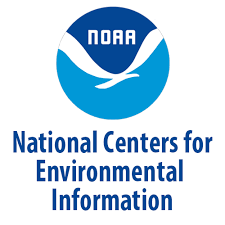 |
World Ocean Atlas 2018 https://www.ncei.noaa.gov/products/world-ocean-atlas
|
 |
World Ocean Database https://www.nodc.noaa.gov/OC5/SELECT/dbsearch/dbsearch.html
|
|
CLIVAR and Carbon Hydrographic Data Office (CCHDO): |
|
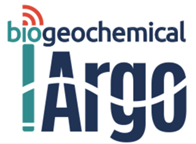 |
Biogeochemical Argo Global Data Assembly Centres: |
 |
OceanSITES Global Data Assembly Centres: |
Surface CO2 Observations: Data & information products
Monday, 07 May 2018
|
|
Global data on surface CO2 measurements are being collected and synthesized as part of the Surface Ocean CO2 Atlas (SOCAT; www.socat.info). While the long-term objective for this theme is to incorporate all biogeochemical surface measurements, currently we focus on CO2 observations and the expansion onto other EOVs will occur gradually.
On this page you will find information on how to submit your data into SOCAT and links to source of original pCO2 data from ships and other platforms available from a number of regional databases and data assembly centres listed below.
|
For submitting data and for quality control of data, please, go to https://access.pmel.noaa.gov/socat. If you do not have an account please request one by sending a mail to: This email address is being protected from spambots. You need JavaScript enabled to view it..
Data submissions must always be accompanied by metadata, and it is encouraged to use the SOCAT metadata template. For more information on how to submit or quality control data, please go to the SOCAT help page. Deadlines for submission to SOCATv2019 is passed but SOCAT is accepting submissions at all times. Deadline for submission to SOCATv2020 is 15 January 2020.
|
 |
Surface Ocean CO2 Atlas (SOCAT) The latest SOCAT version 2019, made public in June 2019, includes data from more than 10 countries. It has 25.7 million quality controlled surface ocean fCO2 measurements from 1957 to 2019. The SOCAT data set uses IOCCP recommended formats for metadata and data reporting. SOCAT quality control is carried out by regional working groups with a global group for coordination. Access SOCATv2019 from: |
 |
US NOAA National Centers for Environmental Information (NCEI) Cruise information and data from Ship of Opportunity Program (SOOP) available from: https://www.nodc.noaa.gov/ocads/oceans/VOS_Program/
See also the Ocean Carbon and Acidification Data Portal: |
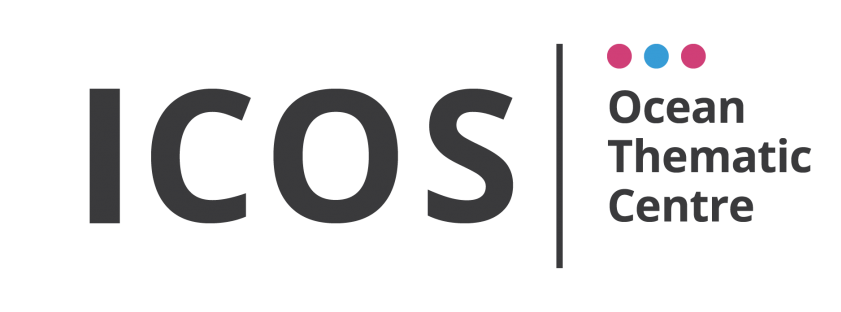 |
Integrated Carbon Observing System Ocean Thematic Centre (OTC) You can access surface pCO2 and other data from the ICOS Carbon Data Portal: |
 |
Global Surface pCO2 (LDEO) Database V2018 The Lamont-Doherty Earth Observatory (LDEO) database V2018 consists of approximately 13.5 million measurements of surface water pCO2 made over the global oceans during 1957-2018 have been processed to make a uniform data file in this Version 2018. The product can be accessed from: https://www.nodc.noaa.gov/ocads/oceans/LDEO_Underway_Database/ |
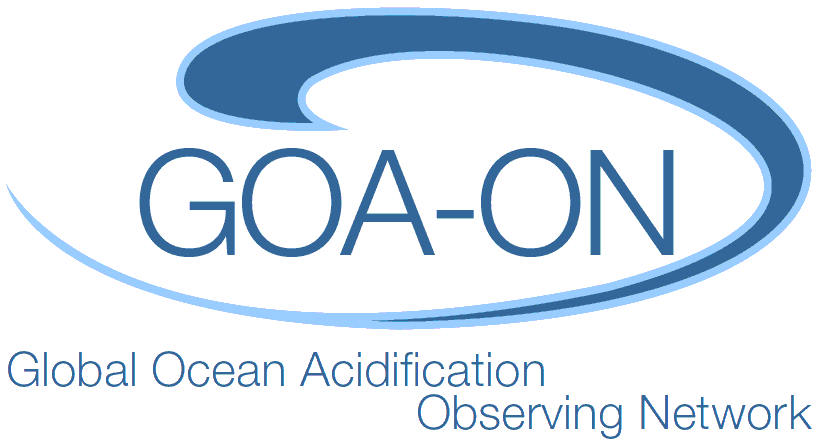 |
Global Ocean Acidification Observing Network (GOA-ON) Data Portal The GOA-ON Data Explorer provides access and visualization to ocean acidification data and data synthesis products being collected around the world from a wide range of sources, including moorings, research cruises, and fixed time series stations. Layers contain contoured world-wide data; Platforms include icons for various observing assets, some of which display real-time data and many of which include links to data and metadata. For a given asset measuring carbonate chemistry, metadata includes information on which parameters are measured, links to data providers, and other useful details. The inventory of GOA-ON assets can be searched interactively by region, platform type, and variables by using the Filters tool. |
 |
OceanSITES Global Data Assembly Centres Surface pCO2 data from moorings can be accessed from: |
 |
Biogeochemical Argo Observations carried out by the rapidly expanding network of profiling floats equipped with biogecohemical sensors is an important asset in the context of aiding pCO2 reconstruction efforts. Data from the floats are available in near-real time and in delayed-mode from: |
Surface CO2 Observations - References
Monday, 07 May 2018
Following is a list of references to standard operating procedures, best practices, manuals and user guides which include information on how to handle surface CO2 measurements in marine waters. Please contact the IOCCP Office if you have suggestions for documents that you think are missing from this site.
|
Palevsky, H.I., Clayton, S., et al (2023) OOI Biogeochemical Sensor Data: Best Practices & User Guide, Version 1.1.1. Ocean Observatories Initiative Biogeochemical Sensor Data Working Group, 134pp. DOI: https://doi.org/10.25607/OBP-1865.2
|
|
Pierrot, D., and T. Steinhoff (2019).
|
|
Pierrot, D., Neill, C., Sullivan, K., Castle, R., Wanninkhof, R., Lüger, H., Johannessen, T., Olsen, A., Feely, R.A., Cosca, C.E., 2009. Recommendations for autonomous underway pCO2 measuring systems and data-reduction routines. Deep Sea Research Part II: Topical Studies in Oceanography, Vol. 56 (8–10), pp. 512-522. https://doi.org/10.1016/j.dsr2.2008.12.005
|
|
Dickson, A.G., Sabine, C.L. and Christian, J.R. (Eds.) 2007. Guide to best practices for ocean CO2 measurements. PICES Special Publication 3, 191 pp. ("Guide" in one PDF file or individual chapters including several translations.)
|
|
Dickson, A.G., Afghan, J.D., Anderson, G.C. 2003. Reference materials for oceanic CO2 analysis: a method for the certification of total alkalinity. Marine Chemistry 80 (2-3), pp. 185-197, https://doi.org/10.1016/S0304-4203(02)00133-0
|
|
[Coming soon] |
|
Lorenzoni, L., M. Telszewski, H. Benway, A. P. Palacz (Eds.), 2017. A user's guide for selected autonomous biogeochemical sensors. An outcome from the 1st IOCCP International Sensors Summer Course.IOCCP Report No. 2/2017, 83 pp. |
Surface CO2 Observations - Resources
Monday, 07 May 2018
Following is a list of various resources related to surface CO2 measurements in marine waters. Please contact the IOCCP Office if you have suggestions for documents that you think are missing from this site.
|
A catalogue of instruments and sensors used to measure pCO2 in the ocean can be found on our instruments and sensors hardware directory site: http://www.ioccp.org/index.php/instruments-and-sensors#pco2
|
|
US NOAA CarbonTracker CT2017 https://www.esrl.noaa.gov/gmd/ccgg/carbontracker/
CarbonTracker is a CO2 measurement and modeling system developed by NOAA to keep track of sources (emissions to the atmosphere) and sinks (removal from the atmosphere) of carbon dioxide around the world. CarbonTracker uses atmospheric CO2 observations from a host of collaborators and simulated atmospheric transport to estimate these surface fluxes of CO2. The current release of CarbonTracker, CT2017, provides global estimates of surface-atmosphere fluxes of CO2 from January 2000 through December 2016. |
|
CO2 system calculation tools A number of tools accessible from our Standards & Methods page HERE. |
|
SOCAT Workshops & Meetings (2007-2017) Reports in chronological order available from: https://www.socat.info/index.php/meetings/
|
|
Surface Ocean CO2 Variability and Vulnerabilities Workshop, Paris, April 2007 IOCCP Report No. 7 available HERE.
|
|
Ocean Surface pCO2, Data Integration and Database Development, Tsukuba, January 2004 IOCCP Report No. 2 available HERE. |
The IOCCP promotes the development of a global network of ocean carbon observations for research through technical coordination and communication services, international agreements on standards and methods, and advocacy and links to the global observing systems. The IOCCP is co-sponsored by the Scientific Committee on Oceanic Research and the Intergovernmental Oceanographic Commission of UNESCO. Read more…
Calendar
|
|
IOCCP meetings, IOCCP-related meetings as well as events related to a wider scope in marine biogeochemistry. |



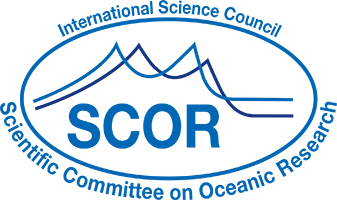

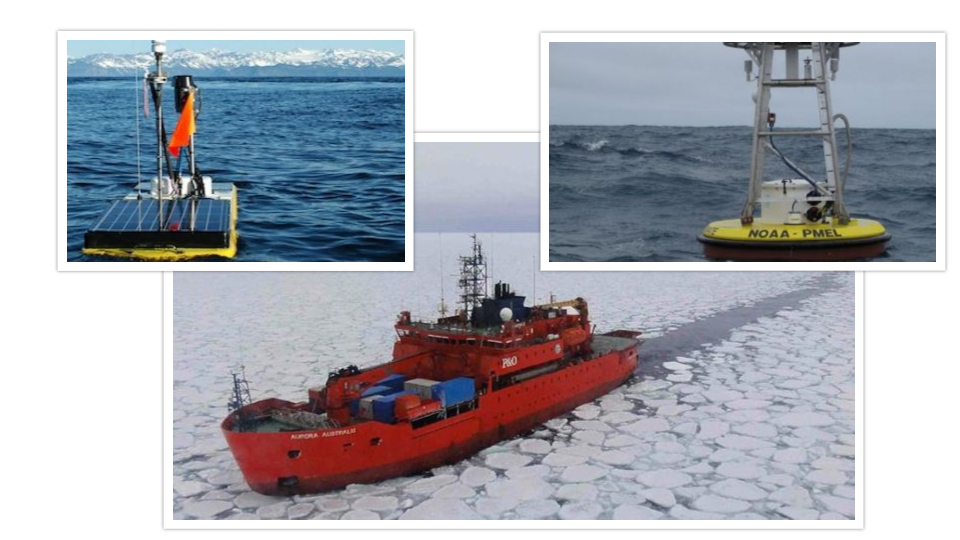


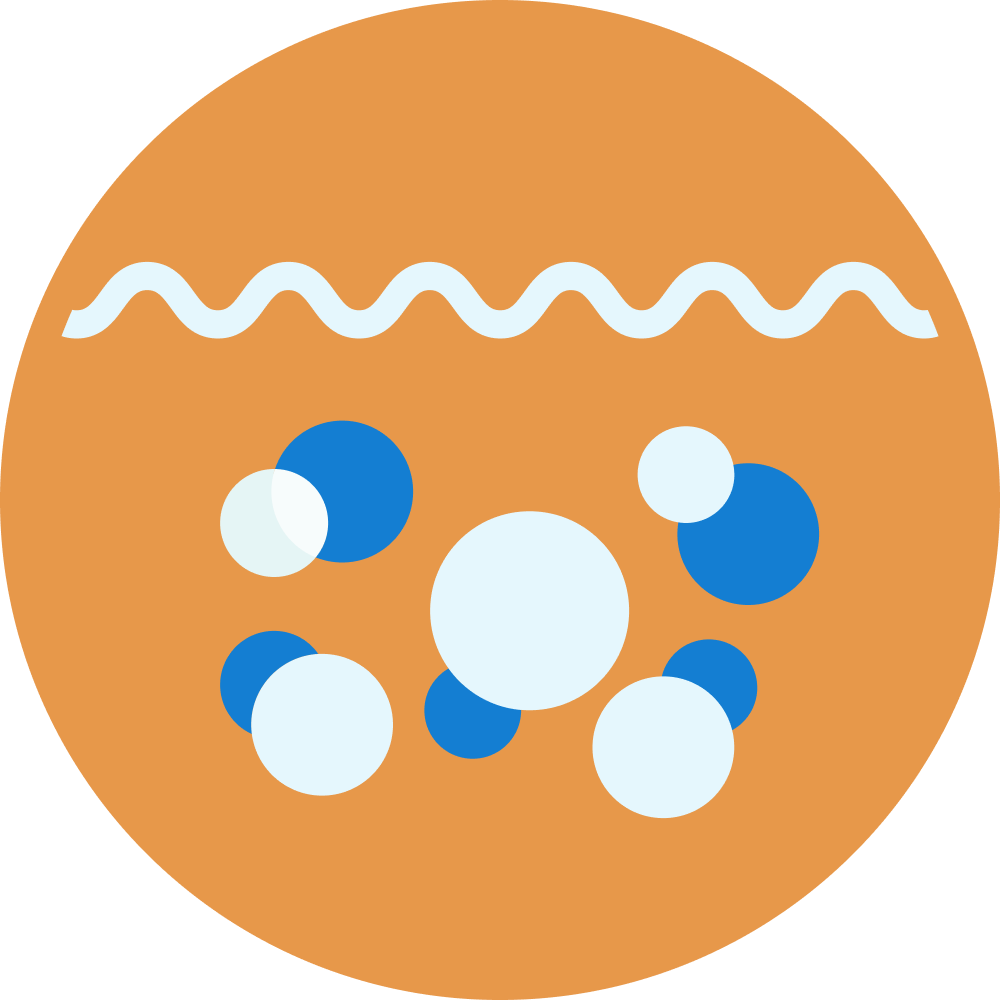


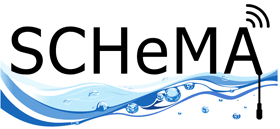

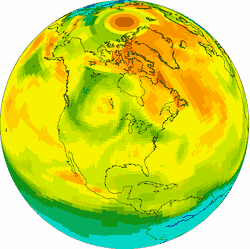
 Please wait...
Please wait...